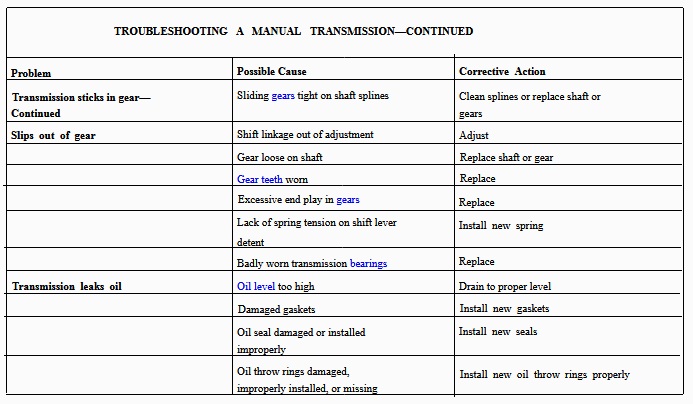
Many problems that seem to be caused by the transmission are caused by clutch, linkage, or drive line problems. Keep this in mind before removing and disassembling a transmission.
TRANSMISSION OVERHAUL
Because of the variations in construction of transmissions, always refer to the manufacturer's service manual for proper procedures in the removal, disassembly, repair, assembly, and installation. These operations vary from 6 to 8 hours, depending on transmission type and vehicle manufacturer.
The basic removal procedures are as follows:
1. Unscrew the transmission drain plug and drain the oil.
2. Remove the drive shaft and install a plastic cap over the end of the transmission shaft.
3. Disconnect the transmission linkage at the transmission.
4. Unbolt and remove the speedometer cable from the extension housing.
5. Remove all electrical wires leading to switches on the transmission.
6. Remove any cross members or supports.
7. Support the transmission and engine with jacks. Operate the jack on the engine to take the weight off the transmission. Be careful not to crush the oil pan.
CAUTION
Never let the engine hang suspended by only the front motor mounts.
8. Depending upon what is recommended by the service manual, either remove the transmission- to-clutch cover bolts or the bolts going into the engine from the clutch cover.
9. Slide the transmission straight back, holding it in alignment with the engine. You may have to wiggle the transmission slightly to free it from the engine.
Once the transmission has been removed from the engine, clean the outside and place it on your workbench. Teardown procedures will vary from one transmission to another. Always consult the service manual for the type of transmission you are working on. If improper disassembly methods are used, major part damage could possibly result. 4-23
Continue Reading